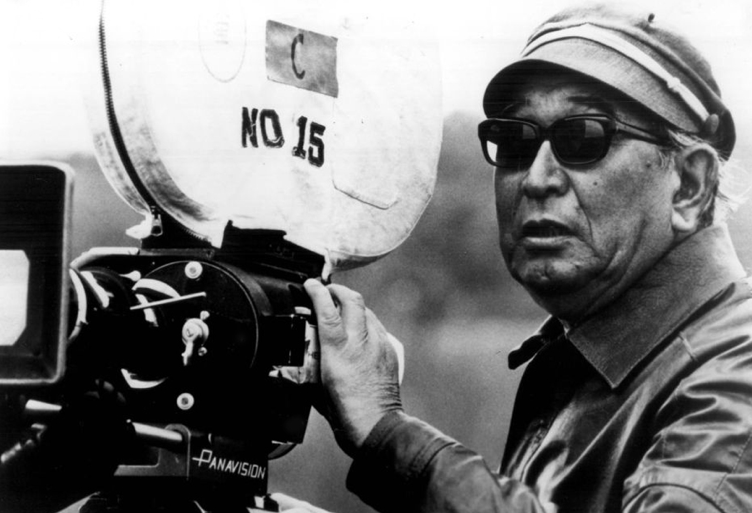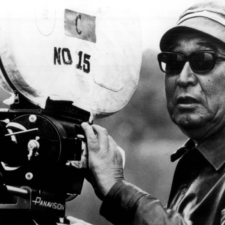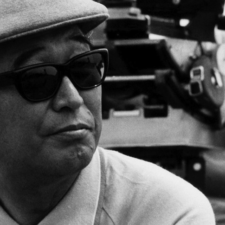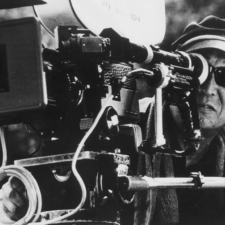Here at LABA for Graphic Design Course and Photography Course all the inputs that may be given by teachers are precious. Often they came from the Cinema World. Famous director like Kurosawa is undoubtedly one the most mentioned.
Akira Kurosawa is, without a doubt, the most celebrated author of classic movies in the country. More of Yasujiro Ozu, Kenji Mizoguchi and Kon Ichikawa, filmmakers equally brilliant, but perhaps more related to a proper Japanese tradition.
Kurosawa has managed to get closer to western imagination instead with his samurai epics.
His approach to the art of cinema led him to win an Oscar, a Leone d’Oro, a Palma d’Oro and several other honors conferred by the Italian Republic.
Kurosawa has filmed his first movie during World War II, but it was the death of an older brother that forces him to get a job in order to contribute to the family budget.
He earned money with illustrations for novels and cookbooks, but with such a high production rhythms he was unable to devote himself to painting as he would have loved to.
In 1936 the time comes to a turning point in the life of the future director, responding to a call of a studio that was looking for assistants. For the occasion, the self-taught director declares:
“I knew enough foreign films to know what pleased me and what we had to take as a basis of inspiration.”
Kurosawa later wrote a few pages, which would have led him to call for the oral examination. Thanks to his outstanding cinematographic culture examiners were convinced to promote him. Kurosawa studied literature, painting, music, theatre and realized that all converged in the cinema.
After two years of apprenticeship as an assistant in films by directors of third-rate, Akira becomes part of the “Yamamoto Group”. The installation, the use of sound, as well as a love of international cuisine and folk crafts, refinement in drinking, are discoveries that Akira made with Yamamoto. As his assistant, Akira takes his first steps in the direction of the scene. Yamamoto was in fact usually involving the crew in all processing stages up to entrust the first assistant sometimes a coordinating role.
Yamamoto recognized the quality of the first Kurosawa Assistant in the first film “The Horse” (1940/1941) for which entrusted him the direction of the first scene. For the occasion the director declared: “Akira had a right vision of things, he was able to learn the art of fitting in a fast, natural way.”
The next step was writing screenplays. On this occasion, Kurosawa was able to surprise with the originality of ideas.
This was the beginning of an outstanding career of which here are the most popular movies in the international sphere:
1- Live (Ikiru), Japan, 1952.
The value of life of a man who is about to lose it, death looming throughout the film dominates the plots of movies that proves tragically true. We’re like a footprint on sand that is swept away by a wave larger than the others.
2- The Seven Samurai (Sichinin no samurai), Japan, 1954.
Undoubtedly the most famous film of Kurosawa, who inspired many other masterpieces. The film won the Leone d’Argento in Venice thanks to an amazing interpretation of Toshiro Mifune.
3 – Rashomon, Japan, 1950.
You can consider a film that had more imitations, the original idea to tell the same episode by multiple characters has made the fortune of the film. Rashomon won the academy award for foreign film and Leone d’Oro at Venice.
4- Ran, Japan, 1985.
The film was shot with an important budget. Ran is a spectacular and entertaining film, beautiful also on a figurative level. It won the Oscar for best Costume Design.
5- Dersu Uzala, USSR/Japan, 1975.
A poem that was transposed on a film. A story told in a unique way that create suspance from the first to the last minute. It won the Academy Award for best foreign language film.
6- Kagemusha, Japan, 1980.
In Kagemusha is developed the double identity obsession, which produces an excellent effect awarded with the Palme d’Or at Cannes.
7- The Challenge of the Samurai (Yojimbo), Japan, 1961.
This is an action movie involving the viewer from the first to the last minute, that inspired “a fistful of dollars” by Sergio Leone.
8- Drunken Angel (Yoidore Tenshi), Japan, 1948.
This film describes a social discomfort, but also a period of turmoil. Drunken Angel is the first real job in which Kurosawa had a free hand and the debut of the great Toshiro Mifune.
9- The throne of blood (Komonuso-jo), Japan, 1957.
This is the reinterpretation of “Macbeth” by William Shakespeare. Thanks to the usual great test of Toshiro Mifune, the movie was exhibited in Europe at the Venice Film Festival.
10- The hidden Fortress (Kakushi toride no san-akunin), Japan, 1958.
An adventure on the road, which is famous for having inspired George Lucas in the conception of the characters of his eldest son: “Star Wars.”







